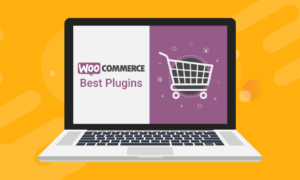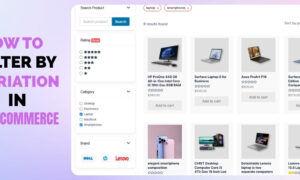WooCommerce has transformed the landscape of online business by seamlessly integrating with WordPress to create robust e-commerce platforms. Whether you’re a seasoned entrepreneur or just starting your online journey, understanding WooCommerce is essential for establishing and scaling your e-commerce store effectively.
Overview of WooCommerce
WooCommerce, originally developed by WooThemes and later acquired by Automattic (the company behind WordPress), stands as the leading e-commerce plugin for WordPress. Powering over a quarter of all online stores globally, WooCommerce offers a user-friendly interface, extensive customization options, and scalability. It effectively turns any WordPress website into a feature-rich online store, enabling businesses of all sizes to sell products and services with ease. Explore the best WooCommerce hosting to get started.
Getting Started with WooCommerce
Setting up WooCommerce is straightforward, even for those unfamiliar with WordPress. Begin by installing the WooCommerce plugin directly from the WordPress dashboard. Once activated, WooCommerce guides you through a setup wizard that helps configure essential settings such as currency options, payment gateways, shipping methods, and tax settings. Choosing a WooCommerce-compatible theme ensures your store’s design aligns with your brand aesthetic and functionality requirements.
Understanding WooCommerce Architecture
At its core, WooCommerce integrates seamlessly with WordPress, enhancing its capabilities with dedicated e-commerce functionalities. These include product management, shopping cart features, checkout processes, and robust order management systems. By leveraging WordPress’s flexibility and WooCommerce’s specialized tools, store owners can customize and optimize their online presence without the need for extensive technical expertise.
Setting Up Your E-Commerce Store
Adding products to your WooCommerce-powered store involves creating product categories, assigning tags for easy navigation, and uploading high-quality images accompanied by detailed descriptions. WooCommerce simplifies inventory management by offering tools to set stock levels, manage product variations (such as sizes and colors), and integrate with extensions for advanced inventory tracking and alerts.
Customizing Your WooCommerce Store
Customization is pivotal in establishing a unique brand identity and enhancing user experience. WooCommerce provides a diverse range of themes specifically designed for e-commerce, catering to various industries and design preferences. These themes can be further customized using WordPress’s intuitive customization tools, allowing store owners to adjust layouts, colors, fonts, and more to reflect their brand’s personality and meet customer expectations.
Plugins play a crucial role in extending WooCommerce’s functionality beyond its core features. From integrating with popular payment gateways like PayPal and Stripe to enhancing shipping options and implementing advanced SEO tools, plugins offer limitless possibilities for customizing your store’s features and optimizing its performance to drive traffic and increase sales.
Optimizing Your WooCommerce Store
To attract organic traffic and improve conversion rates, optimizing your WooCommerce store for search engines (SEO) is paramount. Ensure that product pages are optimized with relevant keywords, compelling meta descriptions, and structured data to enhance visibility on search engine results pages (SERPs). Implementing effective marketing strategies within WooCommerce, such as discounts, coupons, and email campaigns, helps attract new customers and retain existing ones.
Performance and security are critical aspects of running a successful online store. Improve site speed by leveraging caching plugins, optimizing image sizes, and choosing a reliable hosting provider. Ensure secure transactions by installing SSL certificates and regularly updating plugins and WordPress core to safeguard against vulnerabilities and data breaches.
Managing Orders and Customer Relationships
Efficient order management is essential for maintaining customer satisfaction and operational efficiency. WooCommerce simplifies order processing by enabling store owners to manage orders, generate invoices, and handle refunds and returns seamlessly. Implementing a customer relationship management (CRM) strategy within WooCommerce allows for personalized customer interactions, fostering loyalty through targeted marketing campaigns and responsive customer support.
Scaling Your E-Commerce Business
As your business grows, leveraging analytics and reporting tools within WooCommerce provides valuable insights into sales performance, customer behavior, and product trends. Use these insights to make informed decisions regarding inventory management, pricing strategies, and marketing efforts, thereby optimizing your store’s operations and driving sustainable growth.
Scaling your WooCommerce store involves strategic planning and execution. Optimize server resources to handle increased traffic during peak periods, ensuring your store remains responsive and accessible. Expand your product offerings to cater to diverse customer needs and preferences, utilizing WooCommerce’s internationalization features for multi-currency support, localized content, and tailored shipping options to facilitate global sales expansion.
Conclusion
WooCommerce continues to evolve with advancements in technology and updates, staying at the forefront of the dynamic e-commerce industry. By mastering WooCommerce—from initial setup and customization to ongoing optimization and scalable growth strategies—you position your online store for long-term success and profitability. Embrace innovation, stay informed about industry trends, and continuously refine your e-commerce strategies to maintain a competitive edge in the digital marketplace. Building and managing an e-commerce store with WooCommerce empowers entrepreneurs to reach global audiences, maximize sales potential, and achieve their business objectives effectively.
Read More From Techbullion And Businesnewswire.com



































